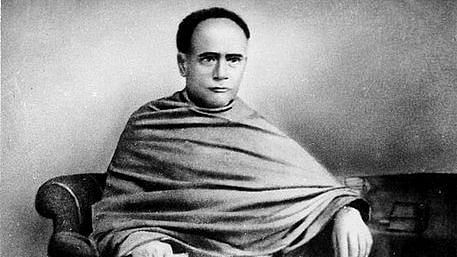New Delhi: Sometime in the 1800s, so the story goes, educationist and reformer Ishwar Chandra Vidyasagar was out soliciting donations as part of an initiative with friends to set up Calcutta University. When he arrived at the door of a king, the latter is believed to have answered the call for donations by taking off a shoe and dropping it in Vidyasagar’s bag.
Vidyasagar thanked the king and moved on.
The next day, Vidyasagar held an auction of the shoe and sold it for Rs 1,000, a fortune in those days. When the king got wind of the matter, he donated the same amount for Vidyasagar’s cause.
Entertaining as it is, the story stands testament to the indefatigable attitude of Vidyasagar, a man far ahead of his time, who made it his life’s mission to break the caste barrier in education in colonial Bengal, fight child marriage, and challenge the deep stigma surrounding widows.
At a time when the idea of widow remarriage was anathema to the larger society, Vidyasagar got his only son married to an adolescent widow in 1870.
Sunday marks the 201st birth anniversary of Vidyasagar, and leaders across party lines — from Union Home Minister Amit Shah to West Bengal Chief Minister Mamata Banerjee — paid homage to the visionary.
Education Minister Dharmendra Pradhan referred to him as “doyen of Bengal renaissance”.
Tribute to a great scholar, social reformer, educationist and doyen of Bengal renaissance Ishwar Chandra Vidyasagar on his birth anniversary. His unparalleled works to transform society and to make education available for everyone, especially women will be remembered forever. pic.twitter.com/2w5HaOAQQd
— Dharmendra Pradhan (@dpradhanbjp) September 26, 2021
Vidyasagar was born Ishwar Chandra Bandopadhyaya on 26 September 1820 in Birsingha village of the Midnapore area of Bengal. The moniker ‘Vidyasagar’ was conferred on him to honour his immense knowledge across several subjects. People also referred to him as ‘Daya-r Sagar’ in recognition of his benevolence.
Poet Michael Madhusudan Dutta, a contemporary of Vidyasagar, said he had the “genius and wisdom of an ancient sage, the energy of an Englishman and the heart of a Bengali mother”.
Also Read: Sir Syed Ahmad Khan, for whom educational reform was a way of life
Education reformer
Vidyasagar grew up in abject poverty as his father Thakurdas Bandopadhyay had a meagre income of Rs 8 per month. He studied under street lights because his family could not afford a gas lamp. After spending his childhood at his village, he went to Calcutta (as it then was) for his further studies.
According to a profile on the West Bengal Council of Higher Secondary Education website, it is believed that “Vidyasagar learned English numbers by following the mile-stones labels on his way to Calcutta at the age of eight years”.
Through the course of his education, he received numerous scholarships.
In Calcutta, he studied at Sanskrit College, where his subjects included Sanskrit grammar, philosophy, astronomy and dialectics.
In 1851, he became the principal at Sanskrit College, where he had earlier served earlier stints as assistant secretary and literature professor.
Between 1851 and 1855, Vidyasagar, along with other reformers, opened many schools for women across Bengal. He used his own income to open 35 schools and was able to enroll 1,300 students.
Vidyasagar is known as the ‘father of Bengali prose’, and is credited with simplifying the Bengali alphabet. His book ‘Borno Porichay’, which means introduction to the alphabet, is a popular primer in Bengal to this date.
Among other things, he translated William Shakespeare’s plays to Bengali.
Due to his contribution in the field of education, a teachers’ group in West Bengal has urged Chief Minister Mamata Banerjee to declare 26 September as Teacher’s Day in the state.
Women’s rights activist
A revolutionary reformer, Vidyasagar also fought for women’s right to education, and believed that men and women, regardless of their caste, should receive equal educational opportunities.
He faced major opposition from the Hindu upper castes in doing so — his departure from Sanskrit University as assistant secretary occurred in such circumstances — but that didn’t pale his enthusiasm.
Vidyasagar proposed and pushed for the Widow Remarriage Act of 1856 in India. Following this, he even looked for suitable matches for child or adolescent widows.
He spent the last 18 years of his life in Jamtara, in present-day Jharkhand, where he worked with tribals and set up a school for girls, and also tried to educate adults.
According to the Jamtara district website, his house there has “been maintained in the original shape”. “The most prized property is the 141-year-old palanquin used by Vidyasagar himself,” it states.
(Edited by Sunanda Ranjan)
Also Read: Maulana Kalbe Sadiq — scholar, educational reformer & ‘India’s second Sir Syed’



